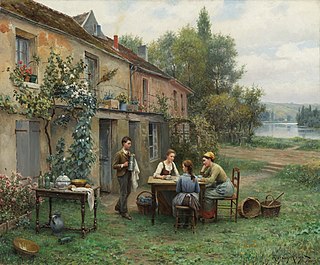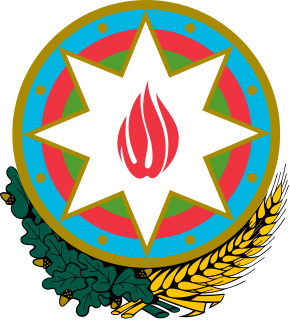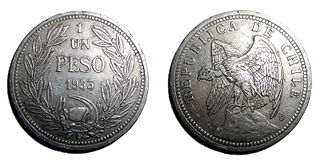Related Research Articles
Agrarianism as a political and social philosophy relates to the ownership and use of land for farming, or to the part of a society or economy that is tied to agriculture. Agrarianism and agrarians will typically advocate on behalf of farmers and those in rural communities. While many schools of thought exist within agrarianism, historically a recurring feature of agrarians has been a commitment to egalitarianism, with agrarian political parties normally supporting the rights of small farmers and poor peasants against the wealthy in society.

Rural sociology is a field of sociology traditionally associated with the study of social structure and conflict in rural areas although topical areas such as food and agriculture or natural resource access transcend traditional rural spatial boundaries. It is an active academic field in much of the world, originating in the United States in the 1910s with close ties to the national Department of Agriculture and land-grant university colleges of agriculture.

A tenant farmer is one who resides on land owned by a landlord. Tenant farming is an agricultural production system in which landowners contribute their land and often a measure of operating capital and management, while tenant farmers contribute their labor along with at times varying amounts of capital and management. Depending on the contract, tenants can make payments to the owner either of a fixed portion of the product, in cash or in a combination. The rights the tenant has over the land, the form, and measures of payment varies across systems. In some systems, the tenant could be evicted at whim ; in others, the landowner and tenant sign a contract for a fixed number of years. In most developed countries today, at least some restrictions are placed on the rights of landlords to evict tenants under normal circumstances.

The Stolypin agrarian reforms were a series of changes to Imperial Russia's agricultural sector instituted during the tenure of Pyotr Stolypin, Chairman of the Council of Ministers. Most, if not all, of these reforms were based on recommendations from a committee known as the "Needs of Agricultural Industry Special Conference," which was held in Russia between 1901–1903 during the tenure of Minister of Finance Sergei Witte.

An agrarian society, or agricultural society, is any community whose economy is based on producing and maintaining crops and farmland. Another way to define an agrarian society is by seeing how much of a nation's total production is in agriculture. In an agrarian society, cultivating the land is the primary source of wealth. Such a society may acknowledge other means of livelihood and work habits but stresses the importance of agriculture and farming. Agrarian societies have existed in various parts of the world as far back as 10,000 years ago and continue to exist today. They have been the most common form of socio-economic organization for most of recorded human history.

Land Bank of the Philippines, stylized as LANDBANK or also known by its initials, LBP, is a universal bank in the Philippines owned by the Philippine government with a special focus on serving the needs of farmers and fishermen. While it provides the services of a universal bank, it is officially classified as a "specialized government bank" with a universal banking license.

Bulgarian Agrarian National Union also translated to English as Bulgarian Agrarian People's Union is a political party devoted to representing the causes of the Bulgarian peasantry. It was an agrarian movement and was most powerful between 1900 and 1923. Unlike the socialist movements of the early 20th century, it was devoted to questions concerning agriculture and farm workers, rather than industry and factory workers. The BZNS, one of the first and most powerful of the agrarian parties in Eastern Europe, dominated Bulgarian politics during the beginning of the 20th century. It is also the only agrarian party in Europe that ever came to power with a majority government, rather than merely as part of a coalition. It is a founding member of the former International Agrarian Bureau.
Agrarian reform can refer either, narrowly, to government-initiated or government-backed redistribution of agricultural land or, broadly, to an overall redirection of the agrarian system of the country, which often includes land reform measures. Agrarian reform can include credit measures, training, extension, land consolidations, etc. The World Bank evaluates agrarian reform using five dimensions: (1) stocks and market liberalization, (2) land reform, (3) agro-processing and input supply channels, (4) urban finance, (5) market institutions.

Before the 1910 Mexican Revolution that overthrew Porfirio Díaz, most land in post-independence Mexico was owned by wealthy Mexicans and foreigners, with small holders and indigenous communities retaining little productive land. This was a dramatic change from the situation of land tenure during the colonial era, when the Spanish crown protected holdings of indigenous communities that were mostly engaged in subsistence agriculture. Mexican elites created large landed estates (haciendas) in many parts of Mexico, especially the north where indigenous peoples were generally not agriculturalists. Small holders, many of whom were mixed-race mestizos, engaged with the commercial economy. Since foreigners were excluded from colonial Mexico, landholding was in the hands of subjects of the Spanish crown. With Mexican independence in 1821 and the emergence of Mexican Liberals, the economic development and modernization of the country was a key priority. Liberals targeted corporate landholding by both the Roman Catholic Church and indigenous villages, for they were seen as impediments to their modernization project. When liberals gained power in the mid nineteenth century, they passed laws in the Liberal Reform that mandated the breakup and sale of these corporate lands. When liberal army general Porfirio Díaz took power in 1876, he embarked on a more sweeping program of modernization and economic development. His land policies sought to lure foreign entrepreneurs to invest in Mexican mining, agriculture, and ranching. It was successful, with Mexican and foreign investors controlling the majority of Mexican territory by the outbreak of the Mexican Revolution in 1910. Peasant mobilization against the landed elites during the revolution and calls for "Mexico for the Mexicans" prompted land reform in the post-revolutionary period.

Agriculture in Venezuela has a much smaller share of the economy than in any other Latin American country. After the discovery of oil in Venezuela in the early 20th century to the 1940s, agriculture has declined rapidly, and with the beginning of large-scale industrial development in the 1940s, agriculture and land reform was largely neglected by successive governments. Since 1999, under the Bolivarian Revolution of President Hugo Chávez, agriculture has had a somewhat higher priority. Agriculture in Venezuela accounts for approximately 3% of GDP, 10% of the labor force, and at least a quarter of Venezuela's land area.
The Comprehensive Agrarian Reform Program, more commonly known as CARP, is an agrarian reform law of the Philippines whose legal basis is the Republic Act No. 6657, otherwise known as the Comprehensive Agrarian Reform Law (CARL). It is the redistribution of private and public agricultural lands to help the beneficiaries survive as small independent farmers, regardless of the “tenurial” arrangement. Its goals are to provide landowners equality in terms of income and opportunities, empower land owner beneficiaries to have equitable land ownership, enhance agricultural production and productivity, provide employment to more agricultural workers, and put an end to conflicts regarding land ownership.

Yunyang District, formerly Yun County or Yunxian, is a district of the prefecture-level city of Shiyan in northwestern Hubei Province, China. It borders the provinces of Henan and Shaanxi. The district spans an area of 3,863 square kilometers, and has a population of 558,355 as of 2010.

In historiography, rural history is a field of study focusing on the history of societies in rural areas. At its inception, the field was based on the economic history of agriculture. Since the 1980s it has become increasingly influenced by social history and has diverged from the economic and technological focuses of "agricultural history". It can be considered a counterpart to urban history.

The Ministry of Agriculture of Azerbaijan is an Azerbaijani governmental agency within the Cabinet of Azerbaijan in charge of regulation of the economic activity in the agricultural sector of the country with a purpose of increasing the sector's production capacity. Agriculture is Azerbaijan's second most important natural resource playing a significant role in the country's economy. The ministry is headed by Inam Karimov.
Land reform refers to efforts to reform the ownership and regulation of land in India. Or, those lands which are redistributed by the government from landholders to landless people for agriculture or special purpose is known as Land Reform.

The Chilean land reform was a process of land ownership restructuring that occurred from 1962 to 1973 in different phases. For much of the 20th century agriculture was one of the most backward sectors of Chilean economy. The land reform was initially supported by Chilean right, centre and left political parties plus the Catholic Church and the United States. After the 1973 Chilean coup d'état the ruling right-wing dictatorship initiated a counter-reform that reverted part of it and directed Chilean agriculture into a "neoliberal" model.
Agrarian means pertaining to agriculture, farmland, or rural areas.
Convertible husbandry, also known as alternate husbandry or up-and-down husbandry, is a method of farming whereby strips of arable farmland were temporarily converted into grass pasture, known as leys. These remained under grass for up to 10 years before being ploughed under again, while some eventually became permanent pasturage. It was a process used during the 16th century through the 19th century by "which a higher proportion of land was used to support increasing numbers of livestock in many parts of England." Its adoption was an important component of the British Agricultural Revolution.
Land reform in the Philippines has long been a contentious issue rooted in the Philippines's Spanish Colonial Period. Some efforts began during the American Colonial Period with renewed efforts during the Commonwealth, following independence, during Martial Law and especially following the People Power Revolution in 1986. The current law, the Comprehensive Agrarian Reform Program, was passed following the revolution and recently extended until 2014.
Agrarianism is social philosophy or political philosophy which values rural society as superior to urban society, the independent farmer as superior to the paid worker, and sees farming as a way of life that can shape the ideal social values. It stresses the superiority of a simpler rural life as opposed to the complexity of city life.
References
- ↑ T. Ludewigs, A. D’Antona, E. S. Brondizio, and S. Hetrick. 2009. Agrarian structure and land-cover change along the lifespan of three colonization areas in the Brazilian Amazon.World Development, Vol 37, No 8, p. 1349.
- ↑ "M. Pietrzak and D. Walczak. 2014. The Analysis of the Agrarian Structure in Poland with the Special Consideration of the Years 1921 and 2002, Bulgarian Journal of Agricultural Science, Vol 20, No 5, pp. 1018" (PDF).
| | This agriculture article is a stub. You can help Wikipedia by expanding it. |